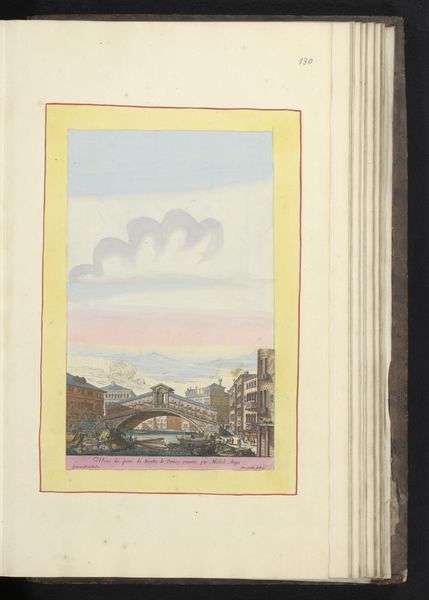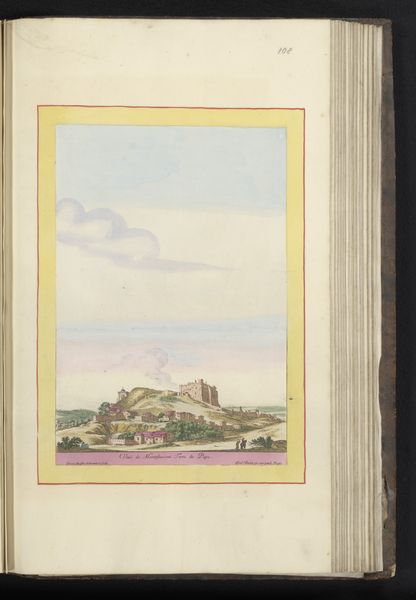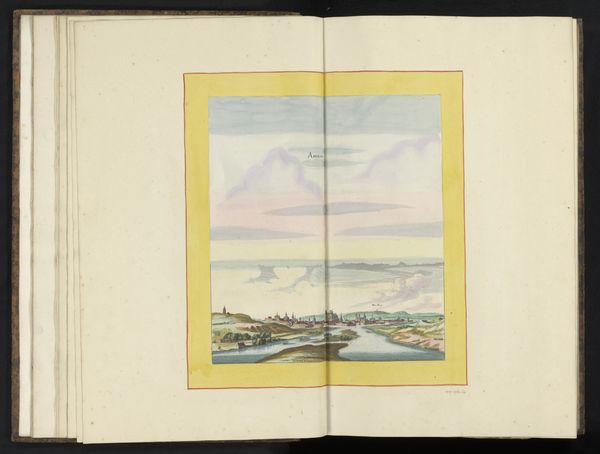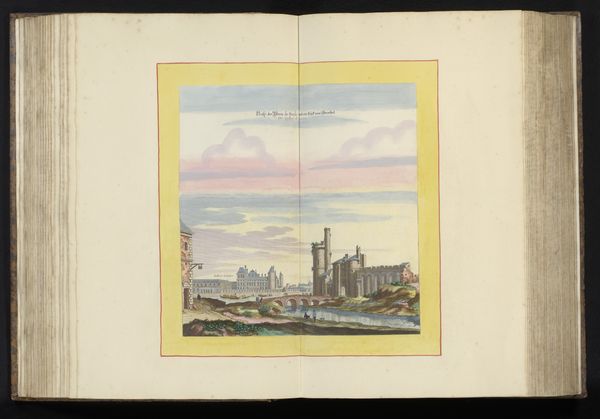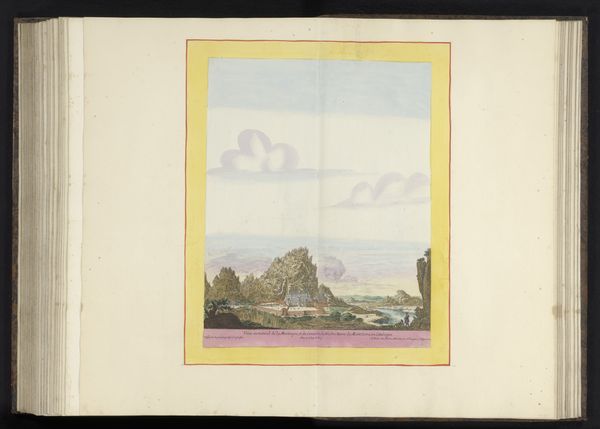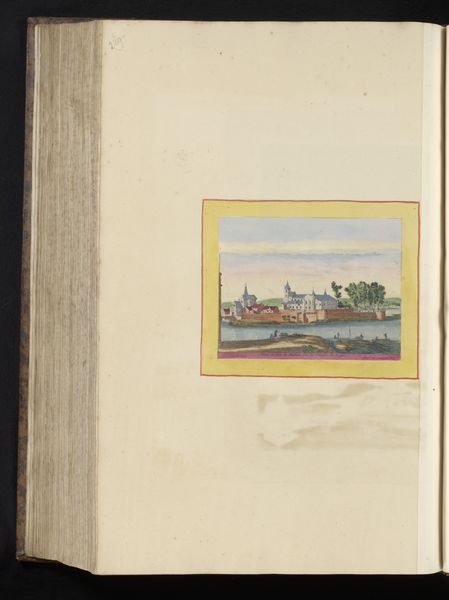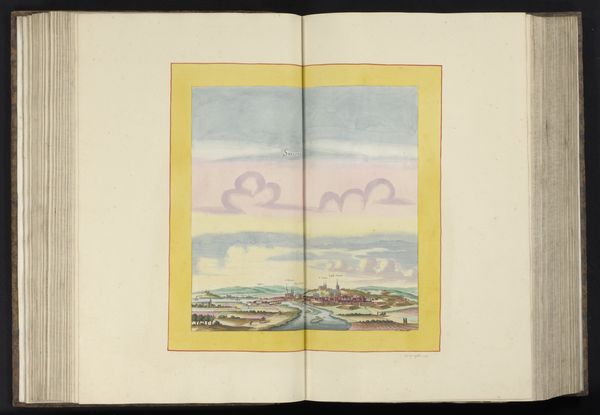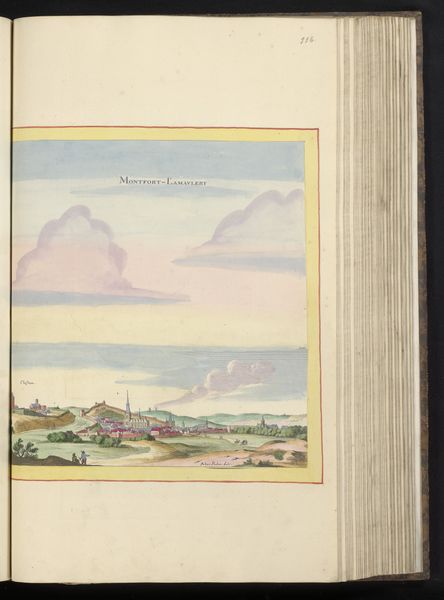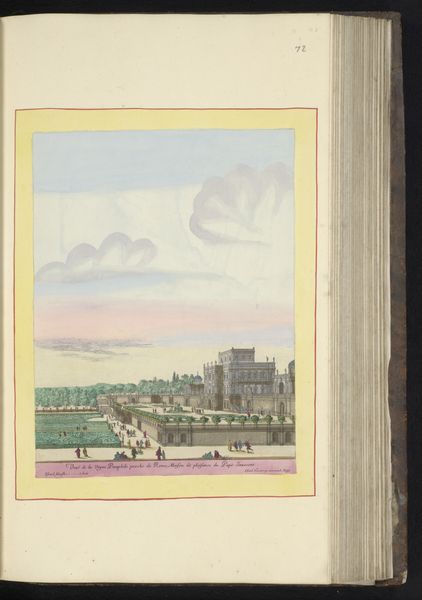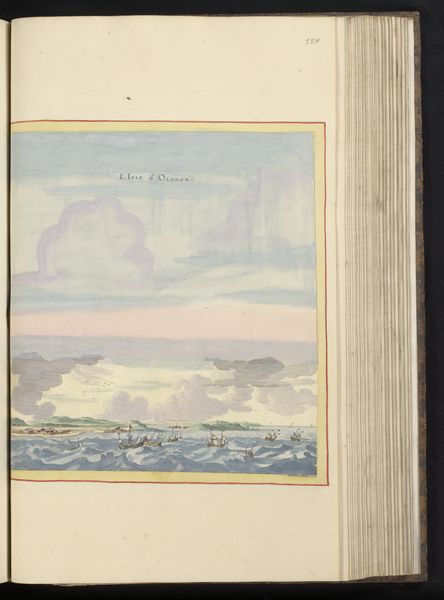
drawing, print, watercolor
#
drawing
#
venetian-painting
#
water colours
#
baroque
# print
#
landscape
#
watercolor
#
coloured pencil
#
cityscape
#
watercolor
Dimensions: height 330 mm, width 250 mm
Copyright: Rijks Museum: Open Domain
Curator: Before us, we have "Punta della Dogana te Venetië," attributed to Israel Silvestre, possibly created between 1631 and 1717. It is currently held at the Rijksmuseum. Editor: My initial impression is of faded grandeur. The colors are soft, almost ghostly. Is this a rendering of Venice or a romantic memory of it? Curator: The drawing, using watercolors and possibly colored pencil, presents a cityscape of Venice, capturing the architectural structure of the Dogana, or customs house, with its prominent tower. We see a series of buildings along the waterfront, punctuated by a flag, and the suggestion of a bustling harbor. Editor: It strikes me how this image, despite its apparent tranquility, subtly alludes to Venice’s maritime power and its role as a significant trading hub. This wasn't merely a pretty picture; it was about power, wealth, and the control of global trade routes. Curator: Indeed. The perspective, slightly elevated, offers a comprehensive view that emphasizes the urban planning and the strategic placement of buildings. Observe the linearity, particularly in the depiction of architectural elements; these are carefully laid out to convey order and control. Editor: But whose order and whose control are we celebrating? The lagoon itself seems almost secondary, despite being the very reason for Venice’s existence. We see people clustered, but who are they, really, beyond nameless figures populating the frame? Are they the merchants, the laborers, or those being exploited by the system? Curator: You raise pertinent points. The social commentary isn't overt. Rather, the emphasis rests upon formal arrangement: how light interacts with surfaces, how spatial depth is created, and how shapes are harmoniously organized. This creates its own particular aesthetic statement. Editor: Yet, such an aesthetic choice inherently reflects the social values of the time—the glorification of power, perhaps? We can appreciate the artistry while critically examining its underlying message. Who was this artwork made *for*, and what narrative were they trying to create and disseminate to their community about wealth and access? Curator: I appreciate how you've drawn out a connection between form and historical interpretation. Looking closely, it's an interplay between artistry and agenda—something, no doubt, we must continue to explore in depth when engaging with works like this. Editor: Absolutely. Ultimately, it serves as a reminder that art always speaks volumes about the society that births it, even when the surface appears serene.
Comments
No comments
Be the first to comment and join the conversation on the ultimate creative platform.
